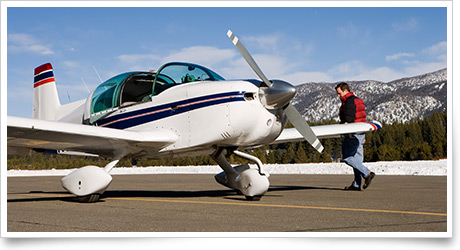Custom content for the Nov. 16, 2012, issue of 'AOPA ePilot' newsletter
| The following stories from the Nov. 16, 2012, edition of AOPA ePilot were provided to AOPA members who expressed an interest in the particular subject areas. Any AOPA member can receive information tailored to their areas of interest by updating their preferences online |
training tipsCaution in the cold
With temperatures dipping below freezing and storms passing through, pay special attention during preflight briefings to airport conditions such as braking action reports, the presence of any snowdrifts alongside runways and taxiways, and whether plowing operations have temporarily closed a runway or imposed a requirement for prior permission to be obtained a stated amount of time before taking off or landing.
Especially on crisp, cold mornings, inspect your trainer meticulously for frost. Yes, it’s cold out there on the flight line, but don’t make short work of this crucial task. You would be surprised—and many mishaps confirm—how little frost it takes to render an airfoil incapable of developing sufficient lift. The many articles you may have read urging the complete removal of the stuff are not exaggerated. Remember, frost can form without the presence of visible moisture.
Frost removed? Next, be sure that your trainer’s pitot tube and static port are unobstructed. How would your airspeed indicator respond to a pitot-tube blockage? Pilots who don’t recognize the symptoms have run into easily avoidable trouble.
If your aircraft engine needs preheating, either because of the engine manufacturer’s recommended winter-starting procedure or because your flight school requires it below a certain temperature, time it so that you can complete preflight chores and start up as soon as possible after the line crew hauls the preheater safely away.
Snow on taxiways and runways is a reminder to taxi with added caution. A slow speed and minimal use of brakes can help avoid a freeze-up, but you should guard against other ways frozen water can interfere with brake operation.
An unexpected encounter with snow during flight is not a problem, provided visual conditions prevail. But if there is a temperature inversion aloft with rain falling into colder air, the serious hazard of freezing rain may exist. Monitor outside air temperature (and pilot reports), noting the height of the freezing level.
Departure delays or extra fuel stops required during the months of less daylight could result in a nighttime arrival at the destination. Carry flashlights—and take the seasonal opportunity to schedule the night training required to achieve your training goal! training products
Are you starting to prepare to take the knowledge test for your private or light sport aircraft certificate? The FAA has a page that provides study tips, information on where you can take the test, a list of sample tests, and computer testing supplements.
Note: Products listed have not been evaluated by ePilot editors unless otherwise noted. AOPA assumes no responsibility for products or services listed or for claims or actions by manufacturers or vendors. final examQuestion: What are some of the differences between a Part 61 flight school and a Part 141 flight school?
Answer: A flight school that is operating under Part 141 of the federal aviation regulations has more oversight by the FAA, usually more rigid schedules, and more paperwork to complete. Because of the added requirements, the training minimums are reduced a bit. For a student training for a private pilot certificate the flight time minimums are reduced by five hours to 35 hours compared to the 40-hour minimum requirement when training under Part 61. Flight schools training under Part 61 of the regulations can be more flexible, affording them the ability to tailor the training to meet an individual’s specific needs. Regardless of whether you train at a flight school under Part 141 or Part 61, they both have to prepare you to pass the same knowledge and practical test. Read more about choosing your flight school here.
Got a question for our technical services staff? Email [email protected] or call the Pilot Information Center, 800/872-2672. Don’t forget the online archive of “Final Exam” questions and answers, searchable by keyword or topic. |
 Whether it’s a new chapter in your flight training or a refresher from last year, the onset of
Whether it’s a new chapter in your flight training or a refresher from last year, the onset of 

